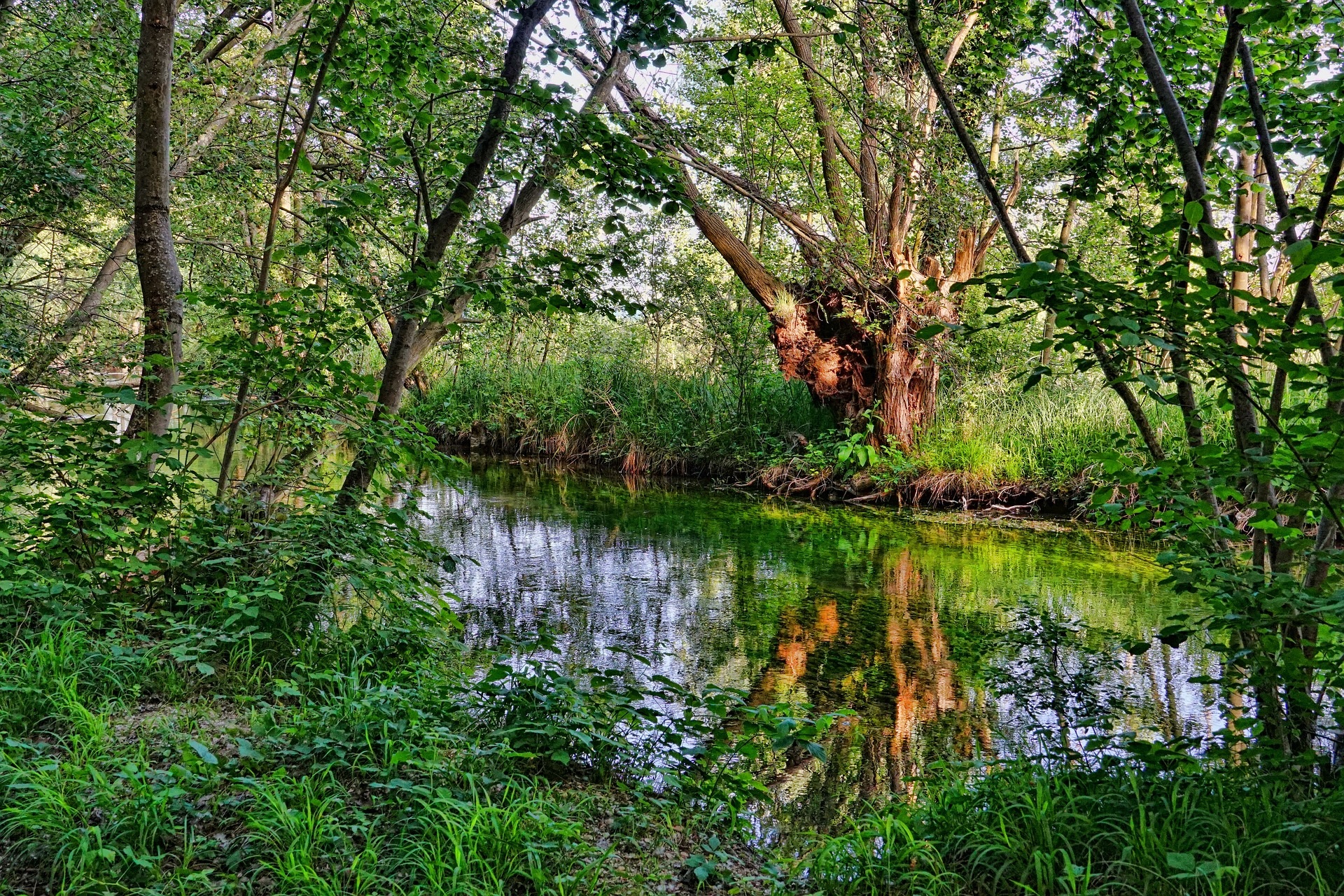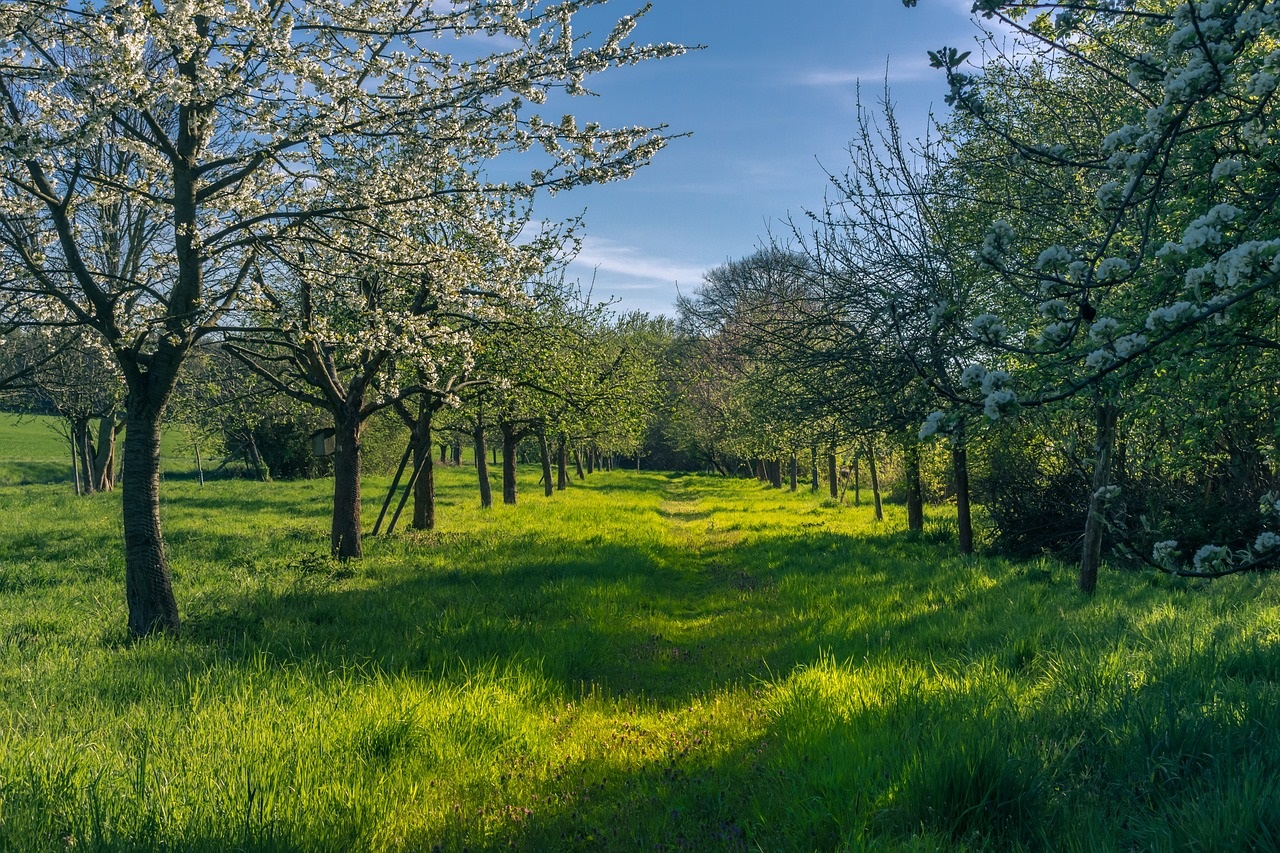Legally protected biotopes are particularly valuable habitats that are subject to special protection under Section 30 of the Federal Nature Conservation Act (BNatSchG). The Lower Saxony Nature Conservation Act (Section 24 NNatSchG) also regulates the protection of such areas and thus strengthens the commitment to preserving our nature.
Why are these biotopes worth protecting?
These unique habitats, such as moors, dry grasslands, natural forests, springs and heaths, are home to numerous endangered plant and animal species. They are often home to specialized species that hardly exist anywhere else. Biotopes contribute to the stability of the entire ecosystem and are indispensable parts of natural cycles that have a positive influence on the environment. By protecting them, we actively contribute to biodiversity and climate protection - for present and future generations.
Which biotopes are protected by law?
According to Section 30 of the Federal Nature Conservation Act (BNatSchG), the following biotopes are protected by law throughout Germany:
- Natural or near-natural areas of flowing and standing inland waters including their banks and the associated natural or near-natural vegetation along the banks as well as their natural or near-natural siltation areas, oxbow lakes and regularly flooded areas,
- Bogs, swamps, reedbeds, sedge meadows, wet meadows rich in sedges and rushes, spring areas, inland salt marshes,
- Open inland dunes, open natural boulder, rubble and scree slopes, clay and loess walls, dwarf shrub, broom and juniper heaths, bristle grassland, dry grassland, heavy metal grassland, forests and scrub in dry and warm locations,
- quarry, swamp and alluvial forests, ravine, boulder and slope debris forests, subalpine larch and larch-pine forests,
- Open rock formations, caves and near-natural tunnels, alpine grasslands, snow valleys and krummholz bushes,
- Rocky and steep coasts, coastal dunes and beach embankments, beach lakes, lagoons with sedimentation areas, salt marshes and mudflats in coastal areas, seagrass meadows and other marine macrophyte stands, reefs, sublittoral sandbanks, mudflats with boring bottom megafauna as well as species-rich gravel, coarse sand and shingle beds in marine and coastal areas,
- Lean lowland hay meadows and mountain hay meadows according to Annex I of Directive 92/43/EEC, orchards, stone bars and dry stone walls.
In Lower Saxony, the following biotopes are also protected by law in accordance with Section 24 of the Lower Saxony Nature Conservation Act (NNatSchG):
- Wet meadows rich in tall herbaceous plants and other species-rich damp and wet grassland,
- Mountain meadows,
- Mesophilic grassland,
- Fruit tree meadows and pastures with an area of more than 2,500 m² of high-stemmed fruit trees with a trunk height of more than 1.60 m (orchards)
- sinkholes.

What does the protection mean for owners and authorized users?
Special requirements apply to persons with ownership rights and those authorized to use areas with legally protected biotopes. The special feature of the protection category of these biotopes is that the prohibitions on action and restrictions on use that apply to them are imposed by law per se, meaning that no further regulation or other form of protection by the nature conservation authorities is required. This means that the prohibition of destruction and impairment applies even before the biotope has been included in the official register by the nature conservation authority and the persons with ownership rights and rights of use have been informed of this.
Any measure that could change, impair or destroy the character of a biotope (such as deforestation, draining, filling or intensive grazing) is prohibited. In the case of planned interventions or changes, prior consultation with the Lower Nature Conservation Authority is required. The aim is to find alternatives or solutions that preserve the special ecological value of the biotope and protect biodiversity. An exception to the prohibitions can be granted on request if impairments can be compensated for. Please contact the Lower Nature Conservation Authority for this.
By protecting these biotopes, together we are setting an example for the preservation of our valuable nature.

More information
- The relevant legal texts can be found under Section 30 BNatSchG and Section 24 NNatSchG
- The NLWKN (Niedersächsischer Landesbetrieb für Wasserwirtschaft, Küsten- und Naturschutz) has a brochure with detailed information on the legally protected biotopes (pdf version free of charge): Legally protected biotopes and landscape features in Lower Saxony | Nds. Landesbetrieb für Wasserwirtschaft, Küsten- und Naturschutz
- Maintenance instructions and detailed explanations of the various biotope types (not only those protected by law, but also other biotope types and animal and plant species) can be found in the NLWKN's implementation instructions: Implementation instructions for species and habitat types | Nds. Landesbetrieb für Wasserwirtschaft, Küsten- und Naturschutz
